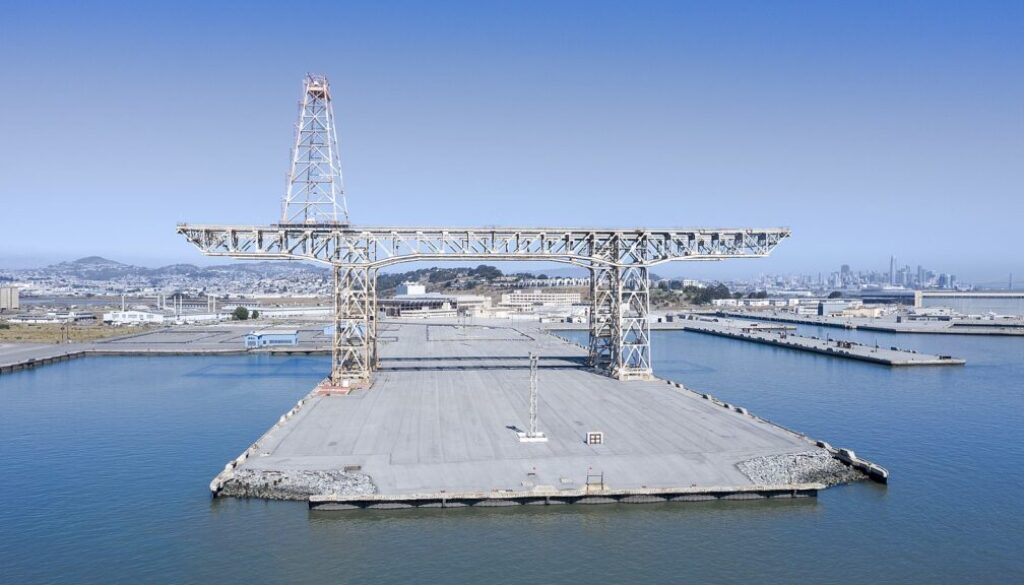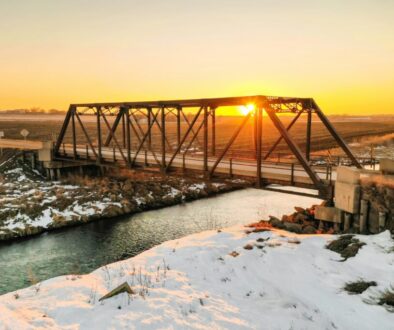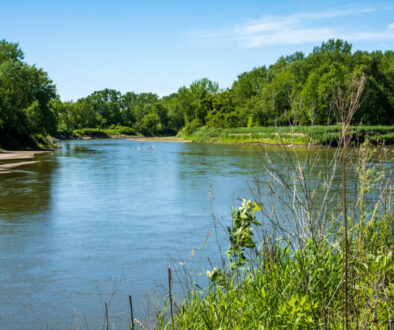Hunters Point Superfund Site May Not Get Full Cleanup
A full cleanup may not materialize for the Hunters Point Naval Shipyard in San Francisco, a Superfund site since 1989, according to a memo the Environmental Protection Agency (EPA) released on September 30th. The memo, which was directed to Public Employees for Environmental Responsibility (PEER) and other groups, implied that the site may remain unfit for unrestricted residential use after the cleanup concludes. The radioactive waste-contaminated shipyard is located within Bayview Hunters Point, a low-income community of color with high asthma and cancer rates.
PEER said in a press release that the memo indicates the cleanup would violate Proposition P, a voter initiative calling for the agency to fully clean the shipyard. Instead, the memo suggests the cleanup plan may entail relying on land use restrictions and covering contamination with caps.
“Regarding your recommendation that soil radiological cleanup goals be based on an unrestricted use scenario consistent with the City/County of San Francisco’s Proposition P, broadly, EPA’s policy is to achieve protective remedies consistent with reasonably anticipated future land use,” said the EPA memo. “Institutional controls, like land use restrictions, are a common component of Superfund remedies nationwide to ensure protection of human health but also to ensure the integrity of remedies in the long term.”
“They’re sort of tacitly conceding the point that what’s going to be left is well above what should be left according to EPA’s own guidance on Superfund matters,” said PEER Pacific Director Jeff Ruch. “Hunters Point was supposed to be the biggest commercial redevelopment since the 1906 San Francisco earthquake. If it’s not cleared for unrestricted use, it’s not clear to what extent it’s going to be usable.”
Bradley Angel, Executive Director of Greenaction for Health and Environmental Justice, called possible failure to fully clean the site “outrageous,” saying inadequate action would “continue to put the health, wellbeing, and lives of Bayview Hunters Point residents at risk.”
“We always knew [Bayview Hunters Point residents] wanted a full cleanup, but more and more residents, more community-based organizations are speaking out in unity,” said Angel. “This is quite alarming, to put it mildly.”
The Navy has agreed to transfer the property to the City of San Francisco after the cleanup is complete, after which a developer plans to create the city’s largest housing development – thousands of homes, along with office buildings, parks, and a school. However, such plans may be jeopardized if the Superfund site is not fully cleaned.
“We do have a say in determining whether or not any land is transferred to the City and County of San Francisco,” said Shamann Walton, President of the San Francisco Board of Supervisors, earlier this month. “Without a 100% cleanup, that land transfer does not take place.”
Hunters Point Naval Shipyard first became contaminated with radioactive waste in the 1940s, when the Navy cleaned ships at the site after they were irradiated during nuclear weapons tests in the Pacific. Contaminated water leached into the soil after the sailors on cleaning duty washed their clothing, and more than 600,000 gallons of contaminated ship fuel were burned at the shipyard. The site was also used to study the effects of radiation on animals.
Climate change exacerbates the shipyard’s modern-day dangers. Rising groundwater and seawater levels have begun to inundate the low-lying site, flushing contaminants from the shipyard into the San Francisco Bay.
“The intersection of rising groundwater and buried contaminants poses a credible risk to human health and well-being,” said a Civil Grand Jury report released in June. “Given the rapidity with which the climate is changing, the City needs to take immediate and sustained action to protect its residents.”
Tomorrow, the San Francisco Board of Supervisors will conduct a hearing to continue its consideration of the report.
(Photo by Christopher Michel, Wikimedia Commons, CC BY-SA 4.0.)
 EWG
EWG



October 6, 2022 @ 3:30 pm
As a former elected member of the Hunters Point Naval Shipyard Restoration Advisory Board and founder of the Radiological Subcommittee I contributed to finalization of the Historical Radiological Assessment and commented on numerous US Navy remediation documents. Many of the hard bound and virtual documents are in my library and digital archive. The EPA Contaminant List for the Hunters Point Naval Shipyard Federal Superfund Site is 25 pages in length and can be found here: https:///cumulis.epa.gov/supercpad/CurSites/srchsites.cfm. The memo you cite from EPA to the parties OLEM, PEER et al is extremely valuable at a time when the Agency has clearly failed in oversight and public accountability. As an aside, I am scheduled to meet with EPA Superfund Manager John Chesnutt and representatives of ATSDR & DTSC on October 17, 2022 to discuss the findings of urinary biomonitoring screening detecting carcinogenic and radioactive heavy metals and chemicals on the State of California Proposition 65 list of carcinogens amplified by geospatial mappings of chemical and cancer clusters that center around the main entry to the shipyards radiation laboratory complex and landfill on the Crisp Road southern shoreline.
EPA expresses greatest concern about the reliability of radiological data collected by Tetra Tech EC, Inc and the expectation that resampling will continue through 2025. In response to selected soil clinic levels chosen in the draft Addendum Five-Year Review EPA responded to in 2019 concluding:” We could not verify that the selected radiological soil cleanup goals are protective of human health for the long-term for several reasons including lack of confirmatory sampling of residual radiological contamination concentrations, confirmation of background radiological concentrations and co-location of radionuclides of concern related to cumulative risk. Radiological remediation goals for thorium -232 and radium – 226 are questionably protective. EPA states “Any cumulative risk will be evaluated following collection of new radiological data during the soil retesting.”
Of note, the youth group Literacy for Environmental Justice conducted random soil testing in regions within the one mile buffer zone of the Hunters Point Naval Shipyard with a focus on lead and as an incidental finding detected thorium.
I commend PEER for its strong advocacy on behalf of the health protectiveness remediation goals and the urgent need to install regulators committed to the Bayview Hunters Point Community given mounting irrefutable human biomonitoring and environmental health mapping data proving residents and workers are being actively exposed to fugitive dust, groundwater, landfill and media at the system of Federal Superfund Sites spawned by historic activities at the Hunters Point Naval Shipyard.
On November 7, 2000, 86.4% of the San Francisco electorate voted in support of the nations first codification of Federal Superfund law requirement that Community Acceptance be included as one of nine criteria guiding remediation and reuse at a former military installation. Proposition P was sponsored by 8 of 10 district supervisors along with the San Francisco Democratic, Republican and Green Parties. In 2001 it was codified as a resolution and in 2018 250 community residents sent a letter to the Navy BRAC calling for reinstatement of the HPNS RAB. Today we are looking at a future in which Proposition P will be the Law of the Land!